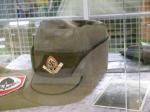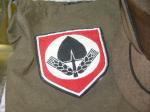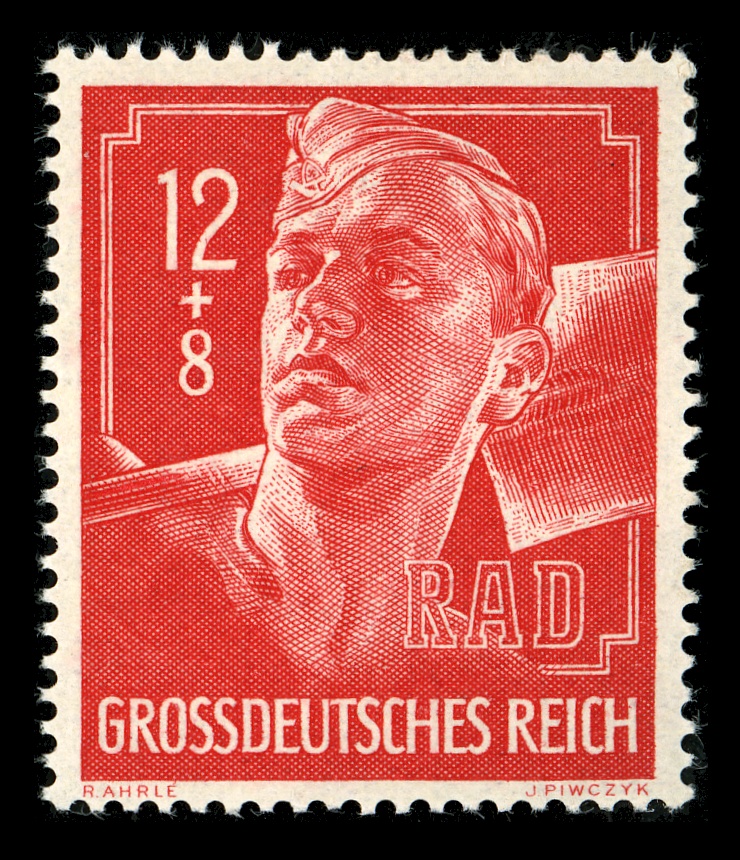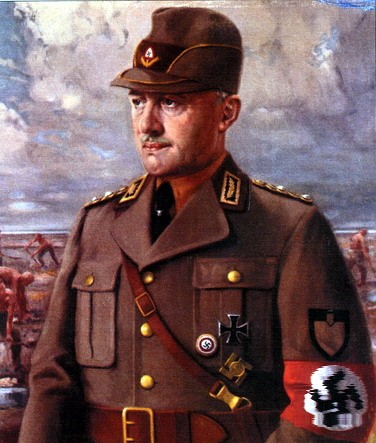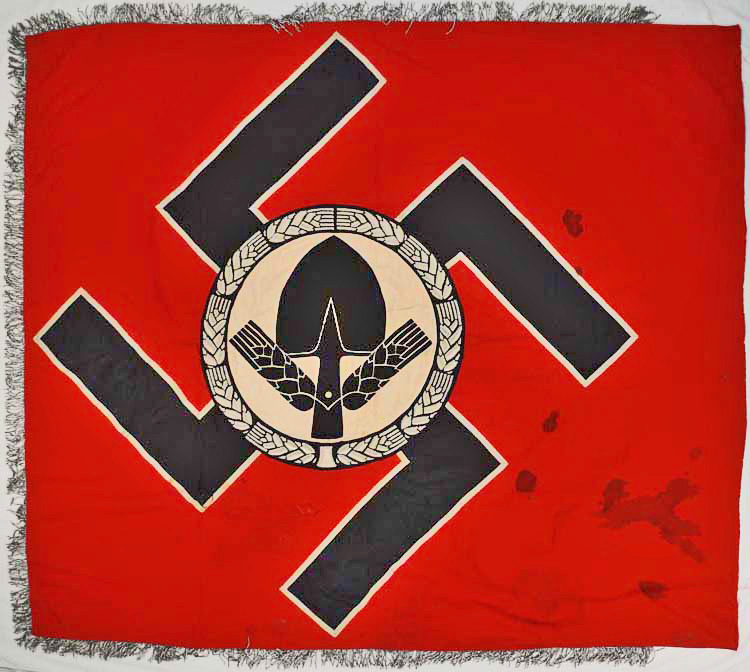
|
|||||||||||||||||||||||||||||||||||
From 1932 until 1933, the FAD (Freiwilliger Arbeitsdienst- Voluntary Labor Service) wore a World War 1 period NCO or officer's visor cap with an earth-brown top piped in red, and a dark brown band. The visor was of the same color material with a raised protective ridge along its leading edge. The hat was generally worn with a leather chinstrap. However, on occasion, officers were noted wearing a silvered chincord with matching side buttons. NCO ranks wore a black leather chinstrap with metal fittings painted in black enamel. The insignia consisted of a standard cockade in the national colors (black-white-red). The center of this cockade was of red wool, bordered by an aluminum circle and having a serrated outer rim of black plastic or celluloid. This was pinned through the band and had centered above it the FAD badge-a spade flanked on each side by barley stalks. This badge was either of a silver color or made out of naturally colored aluminum metal. THE RAD "ROBIN HOOD" CAP In 1933 a completely new type of cap was introduced for enlisted personnel and NCO ranks. It was a soft cap done in brownish blended wool, including the bill, and is often known as the "Robin Hood" cap. The hat body had a slight crease in the center of the crown and there were also creases in front of each of the sides, as well as a small circular metal air vent (sometimes two) in the hat body. The hat piping was the same color as the hat body and mounted along the leading edges of the cap's sides. The same piping, located approximately one inch (64 mm) from the edge of the visor, ran parallel to its leading edge. The hat band, in a darker brown wool was partially exposed where the side edges of the cap parted in the front.
The new insignia used on this cap consisted of a redesign of the original FAD silver metal badge, ie. a shovel instead of a spade (superimposed on two barley shafts the latter flanking it on the left and right of the shovel,) The swastika was black with a white outline and the edges of the shovel were outlined in red. THE OVERSEAS CAP The FAD style overseas cap was of a brown blend of wool with no piping and the only insignia, a national cockade. THE RAD M-43 CAP An Austrian forage or M-43 style hat of earth-brown wool was also used during the war years by all ranks of the RAD. Its piping color followed the organizational levels described above with regard to the overseas cap and encircled the entire paneled edge of the cap. The ear flaps were secured in the front of the cap by two aluminum pebbled metal buttons. The RAD insignia was centered above the buttons on the upper cap body. RAD FEMALE HEADDRESS During the war, all female members of the RAD wore a brimmed hat of blended brown felt. The band was of a light grey silk to which was pinned an insignia consisting of a swastika superimposed on two barley stalks and circled by an oval. This emblem was silver-colored aluminum for lower ranks and gilt for officers. |
|
Droit d’auteur La plupart des photographies publiées sur ce site sont la propriété exclusive de © Claude Balmefrezol Elles peuvent être reproduites pour une utilisation personnelle, mais l’autorisation préalable de leur auteur est nécessaire pour être exploitées dans un autre cadre (site web publications etc) Les sources des autres documents et illustrations sont mentionnées quand elles sont connues. Si une de ces pièces est protégée et que sa présence dans ces pages pose problème, elle sera retirée sur simple demande. Principaux Collaborateurs:
Nb
de visiteurs:7079558 Nb
de visiteurs aujourd'hui:1337 Nb
de connectés:61 | |||||||||||||||||||||||||||||||||





.JPG)
.JPG)
